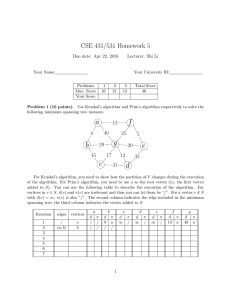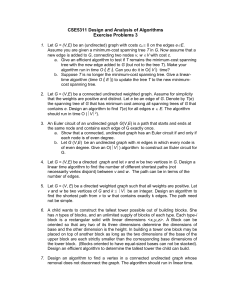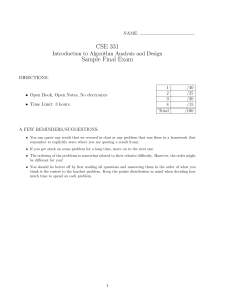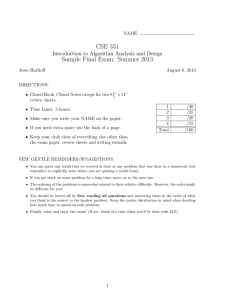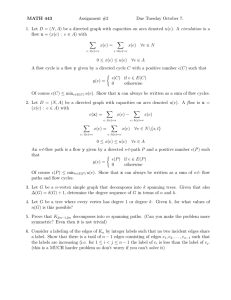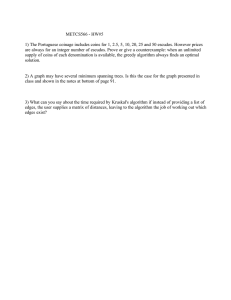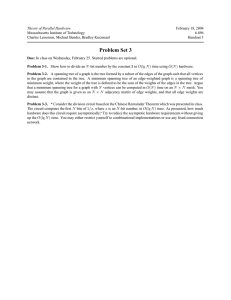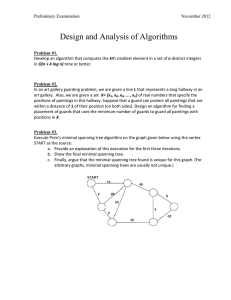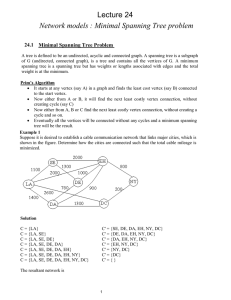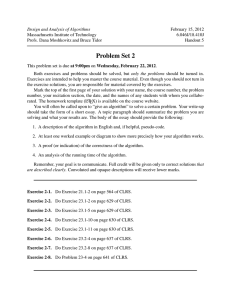CS302 Final Exam, December 9, 2014 - James S. Plank
advertisement
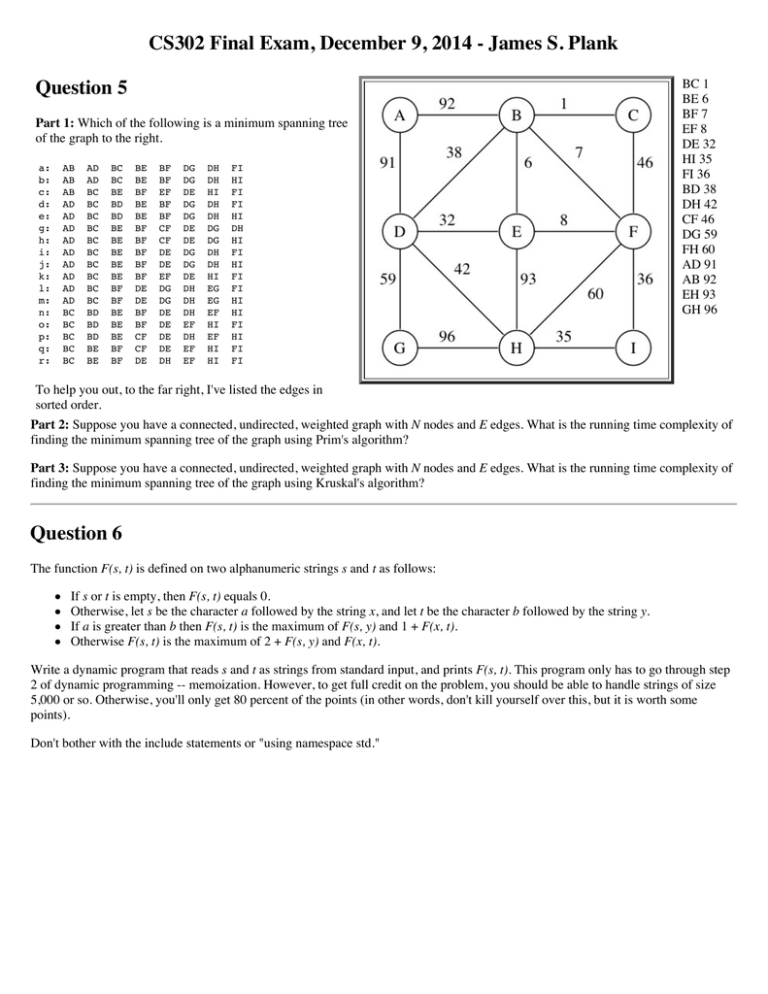
CS302 Final Exam, December 9, 2014 - James S. Plank Question 5 Part 1: Which of the following is a minimum spanning tree of the graph to the right. a: b: c: d: e: g: h: i: j: k: l: m: n: o: p: q: r: AB AB AB AD AD AD AD AD AD AD AD AD BC BC BC BC BC AD AD BC BC BC BC BC BC BC BC BC BC BD BD BD BE BE BC BC BE BD BD BE BE BE BE BE BF BF BE BE BE BF BF BE BE BF BE BE BF BF BF BF BF DE DE BF BF CF CF DE BF BF EF BF BF CF CF DE DE EF DG DG DE DE DE DE DH DG DG DE DG DG DE DE DG DG DE DH DH DH EF DH EF EF DH DH HI DH DH DG DG DH DH HI EG EG EF HI EF HI HI FI HI FI FI HI DH HI FI HI FI FI HI HI FI HI FI FI BC 1 BE 6 BF 7 EF 8 DE 32 HI 35 FI 36 BD 38 DH 42 CF 46 DG 59 FH 60 AD 91 AB 92 EH 93 GH 96 To help you out, to the far right, I've listed the edges in sorted order. Part 2: Suppose you have a connected, undirected, weighted graph with N nodes and E edges. What is the running time complexity of finding the minimum spanning tree of the graph using Prim's algorithm? Part 3: Suppose you have a connected, undirected, weighted graph with N nodes and E edges. What is the running time complexity of finding the minimum spanning tree of the graph using Kruskal's algorithm? Question 6 The function F(s, t) is defined on two alphanumeric strings s and t as follows: If s or t is empty, then F(s, t) equals 0. Otherwise, let s be the character a followed by the string x, and let t be the character b followed by the string y. If a is greater than b then F(s, t) is the maximum of F(s, y) and 1 + F(x, t). Otherwise F(s, t) is the maximum of 2 + F(s, y) and F(x, t). Write a dynamic program that reads s and t as strings from standard input, and prints F(s, t). This program only has to go through step 2 of dynamic programming -- memoization. However, to get full credit on the problem, you should be able to handle strings of size 5,000 or so. Otherwise, you'll only get 80 percent of the points (in other words, don't kill yourself over this, but it is worth some points). Don't bother with the include statements or "using namespace std."
